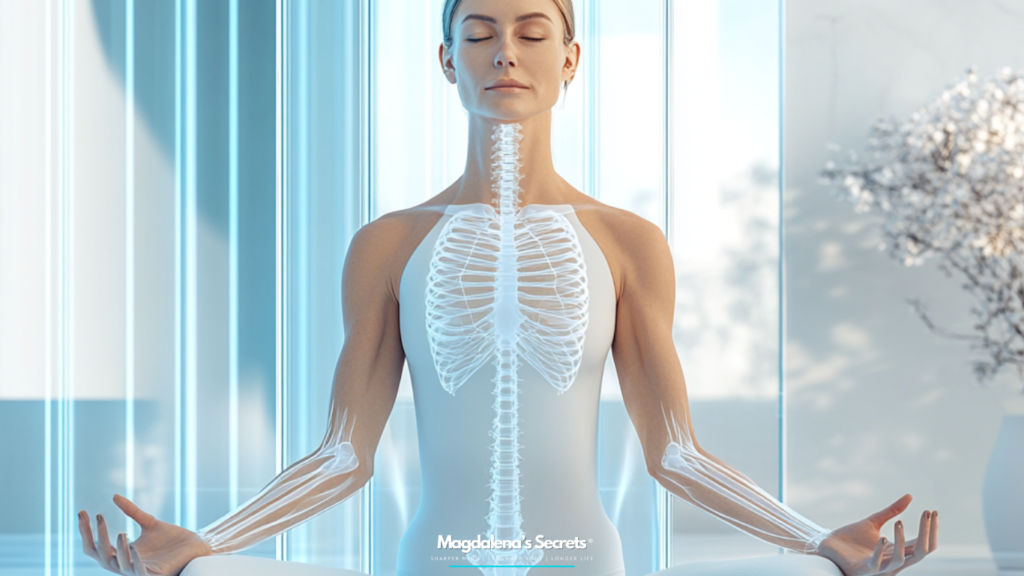Bone loss is one of the most serious health challenges women face after menopause. As estrogen levels drop, bone remodeling becomes imbalanced—leading to more bone breakdown than formation. This increases the risk of osteopenia, osteoporosis, and fractures, particularly in the hips, spine, and wrists.
But here’s the good news: the right kind of exercise can protect and rebuild your bones. And thanks to new research, we now know which types of movement are most effective.
Why Bones Weaken After Menopause
Estrogen plays a critical role in preserving bone density. Once it begins to decline—often rapidly in the 5–7 years post-menopause—bones can lose up to 20% of their density if left unsupported.
Your bones aren’t static. They respond to mechanical stress — the kind created by lifting, jumping, or climbing. This is why targeted, bone-loading exercises are essential for long-term skeletal strength.
Top Exercises That Strengthen Bones
1. Resistance Training (Strength Training)
The most effective method for building and maintaining bone mass.
According to studies in the Journal of Bone and Mineral Research, lifting weights at moderate to high intensity improves bone mineral density (BMD) in postmenopausal women, especially in the spine and hips.
Best moves include:
- Barbell or dumbbell squats
- Weighted lunges
- Resistance machines
- Deadlifts
- Bodyweight exercises like push-ups and planks
Aim for 2–3 sessions per week, focusing on progressive overload.
2. High-Impact Weight-Bearing Exercises
These create brief bursts of mechanical stress that stimulate bone-building cells (osteoblasts).
Examples:
- Jump squats
- Skipping rope
- Jumping jacks
- Hopping drills
- Dance classes with bounce
Start gently if you’re new or managing joint issues.
3. Stair Climbing & Hill Walking
Excellent for hips, legs, and spine.
Climbing stairs or walking uphill forces bones and muscles to work against gravity—building both density and stability.
Bonus: Improves cardiovascular health and balance.
4. Power Training (Fast Reps)
New research shows that lifting lighter weights quickly enhances bone response more than slow lifts.
In a 2023 Osteoporosis International study, power training improved bone markers significantly.
Example: 8 quick reps of kettlebell lifts with proper form.
Great option for women who may not tolerate heavy loads.
5. Tai Chi & Balance Training
Helps prevent falls—a major cause of fractures in aging women.
While Tai Chi doesn’t directly increase bone density, it improves:
- Proprioception
- Coordination
- Ankle & core stability
Also reduces cortisol (chronic stress is linked to bone loss).
What Doesn’t Build Bone
• Swimming and cycling — great for your heart, but non-weight-bearing, so they don’t load bones enough to stimulate growth.
• Excessive endurance training — such as long-distance running without strength work — can stress bones without rebuilding them.
Final Thoughts: Train Smart, Stay Strong
To protect your bones after menopause, don’t just move — move wisely.
Incorporate a mix of:
- Strength training
- High-impact moves
- Power bursts
- Balance-focused practices
Start now, go at your pace, and stay consistent. Whether you’re 45 or 75, your bones will respond to the right kind of challenge — and reward you with strength, resilience, and freedom of movement for years to come.




